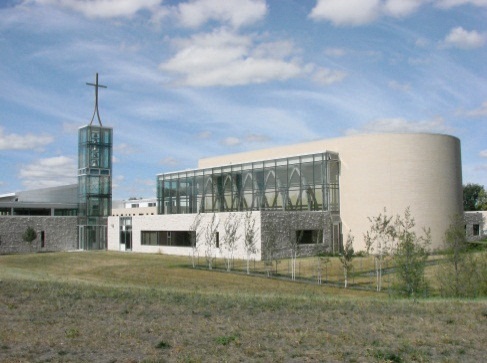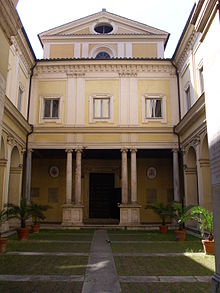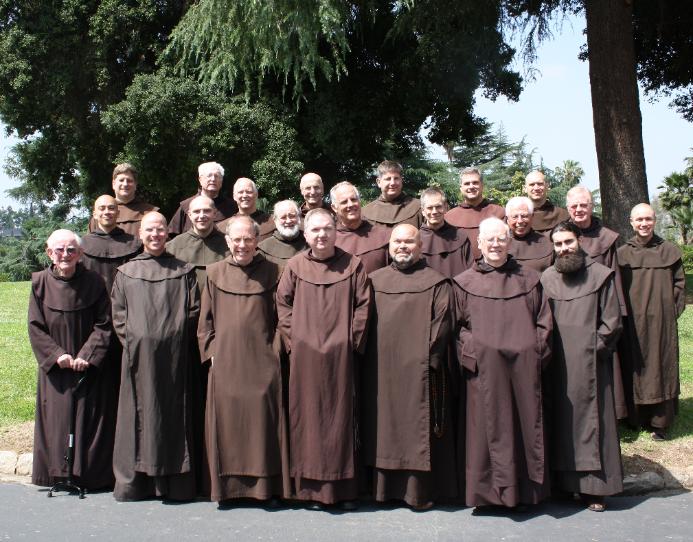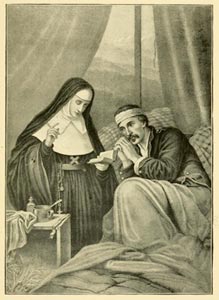 Young Brittlyn (Sr. Teresa), at left and Kalyn (Sr. Faustina) are here seen rejoicing in the gift of Our Lady’s habit. It didn’t come easily for either of these Lafayette Carmelites.
Young Brittlyn (Sr. Teresa), at left and Kalyn (Sr. Faustina) are here seen rejoicing in the gift of Our Lady’s habit. It didn’t come easily for either of these Lafayette Carmelites.
“Daddy, Go back”
Kalyn Meche met the Sisters when she was about ten years old. Her family was driving by their monastery when she saw one of them in the yard.
“Daddy, go back. I’d like to talk to that Sister!” From then on, there was a desire and love for Carmel that never left her. She kept in contact with the community, made days of recollection at the monastery, and received encouragement and advice from her spiritual director. After going through many trials and difficulties, Kalyn entered the monastery on October 1, 2010, at the age of 18.
Her first months were not easy but she remained firm in her determination to be a Carmelite. On September 30, 2011, Kalyn received the Habit of Our Lady and became Sister Maria Faustina of Merciful Love.
The date was significant for her in that it is the date of St. Therese’s death and the birthday of Mother Theresa Margaret, their Foundress. Sister has always had a great devotion to St. Faustina and St. Therese. She loves their spirit of total abandonment and trust and endeavors to incorporate these childlike virtues in her own life. Her desire of many, many years has been fulfilled.
“All I want now is to be a true Carmelite and a loving Bride of Jesus.”
Dying Mother’s Blessing
Brittlyn Sonnier, likewise 18 when she entered, came to know of the Lafayette Carmelites through one of the weekend Veritas Retreats. She had struggled against a vocation for a few months, but after the retreat and coming to see the community, she knew that Jesus was calling her to Carmel.
When asked what she expected to find in Carmel, her reply was: “I really don’t know. All I know is that Jesus wants me there.” The date of her entrance was set for October 15, 2010.
Brittlyn’s mother was dying of cancer, and she wondered whether she should enter as planned or stay and help her father care for the other four younger children. Being a family of deep faith, they encouraged her to go to Carmel if she felt God calling her.
She then asked her Mother, whom she was caring for in the hospital. True to her conviction of Brittlyn’s vocation, Monique gave her eldest daughter her blessing and encouraged her in her desire to give herself entirely to Our Lord.
This is indeed the niche God has chosen for her. She has imbibed the spirit of the community from the start and has a deep spirit of prayer and generosity. On October 15, 2011 Brittlyn received the habit and became Sister Teresa of Jesus.
For more information on the Lafayette Carmelites, click here.









